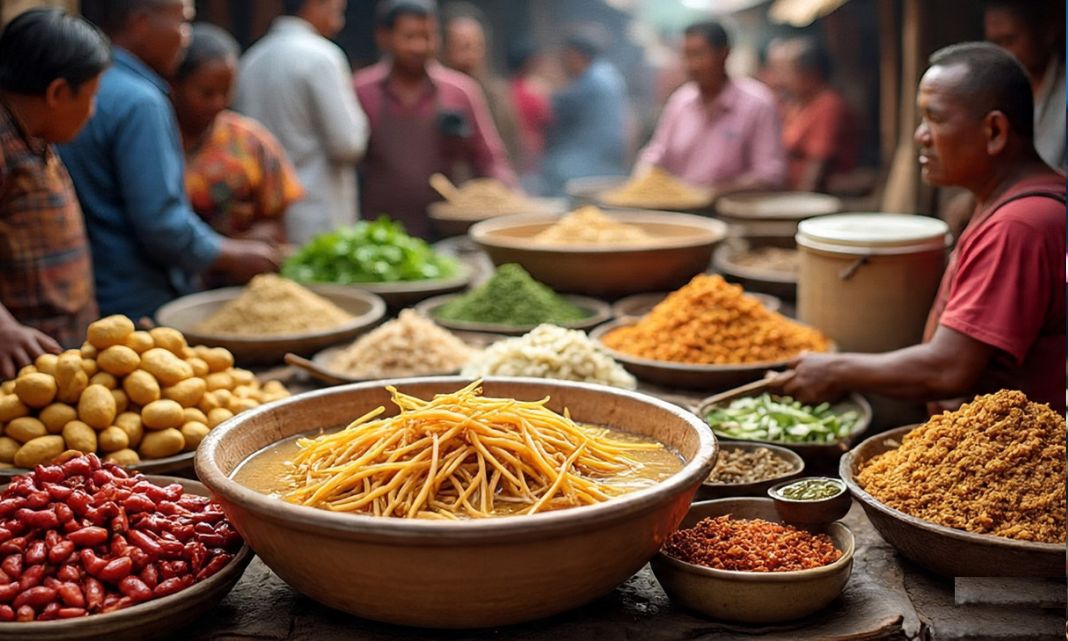Musté cultures have an attractive word with many meanings, but it is most closely associated with culinary traditions and fermentation practices. In simple terms, Musté may refer to a component created through a paste, a drink, or fermentation. Its versatility and deep cultural roots make it both a practical food source and a symbol of tradition.
In this article, we will find out:
- What is musté
- Where it comes from
- How it is used in different cultures
- Its health benefits
- Musté process
- Why it even matters today
By the end, you will have a clear introduction to musté and will have a better understanding of its origin, use, and profit.
What is Musté?
At its core, musté refers to a fermented food or drink. The exact definition depends on the field:
- In some places, it is a fermented paste used in cooking.
- In others, it is a drink made of fruits or grains.
- In the Mediterranean regions, it often comes from grapes, a by-product of winemaking.
This variation makes musté a global food tradition, which appears in various forms in Asia, Africa, Europe and America.
Origin of Musté
The origin of musté goes back thousands of years. Fermentation was one of the early food protection techniques of humanity, allowing communities to survive when fresh food was rare.
- Asia and Africa: Musté probably began as a way to preserve grains, fruits and vegetables here.
- Mediterranean region: Grapes were fermented in syrup, beverages and sauces.
- Indigenous America: Fruits like guava and passionfruit were converted into fermented drinks.
Over time, trade and migration spread musté, causing regional variations that are alive today.
Regional Variations and Uses of Musté
Various cultures use musté in unique ways:
- East Asia: A base for soup, pickle, and stew. Tangy and sour, it enhances salty or spicy foods.
- Africa: Filled with grains such as millet or sorbet, then used in soup or as a traditional drink.
- Europe (Mediterranean): Musté derived from grapes, used in dessert, marinades and drinks.
- America: Fermented fruit pastes and beverages, sometimes light to alcoholic.
This suggests how musté adapts to local resources, becoming both a daily staple and a formal food.
Cultural Importance of Musté
Musté is more than food – it is tied to heritage and rituals.
- In African traditions, prayer and seasonal rituals are often involved in preparing musté.
- In Asia, fermented foods such as musté are a symbol of protection, patience and renewal.
- In European winemaking cultures, grapes in musté are observed in crop festivals.
These traditions show how musté connects agriculture, culture and community.
Health Benefits of Musté
One reason musté has stood the test of time is its nutrition and probiotic benefits.
- Probiotic properties – supports gut health and strengthens digestion.
- Nutrient density – fermentation increases vitamins, minerals and antioxidants.
- Digestive aid – enzymes break down complex foods from fermentation.
- Preservation – keeps food safe without refrigeration for long periods.
Today, musté is recognized not only for taste, but also as a natural health booster.
How to Make Musté?
The process of making musté depends on whether it is a paste, a drink, or a sauce. However, the core steps remain the same:
- Selection of materials – cereals, fruits or vegetables are chosen.
- Fermentation – natural yeast or added starters break down sugars.
- Monitoring – flavors develop in days or weeks, adjusted as required.
- Straining or combining – for drinks, solids may be removed; for paste, texture is refined.
- Storage – placed in jars or bottles, often in quiet, dark places.
This simple yet effective process explains why musté is popular worldwide.
Why Musté Still Matters?
In a world where processed foods dominate, musté represents a return to traditional, natural methods of food preparation.
- Cultural roots – connect us with history.
- Nutritional value – supports health.
- Culinary versatility – makes it useful in global cuisine.
By studying and preserving musté, we also preserve a piece of human heritage.
FAQs about Musté
1. What do you mean by musté?
Musté is a component used in a fermented paste, drink, or cooking, which varies in cultures.
2. Where did musté originate?
It was probably born in Africa and Asia, but spread worldwide through trade and migration.
3. Is musté healthy?
Yes, it contains probiotics, enzymes and nutrients that support digestion and overall health.
4. What are the general uses of musté?
It is used as a spice, a base for soup or stew, or as a fermented drink.
5. How long does musté take to ferment?
Depending on the recipe, it can take from a few days to several weeks.
Conclusion
Musté is more than just a food component – it is the story of culture, survival, and taste. From its origin in ancient agricultural practices to its use in modern kitchens around the world, musté represents the power of fermentation to nourish, preserve, and connect communities.
Whether enjoyed as a tangy paste, a traditional drink, or part of a cultural ritual, musté remains a living link between history and the present.

